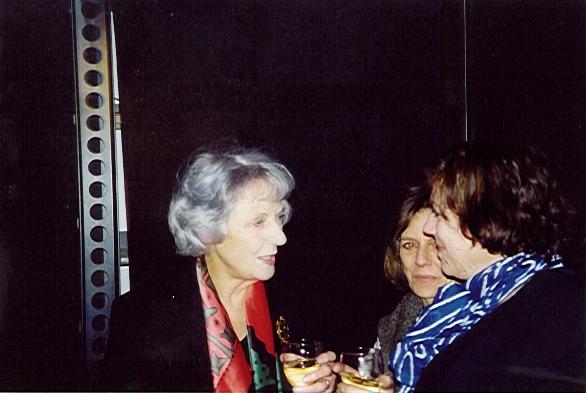Pilgrim's Progress:
Powell and Pressburger revisited
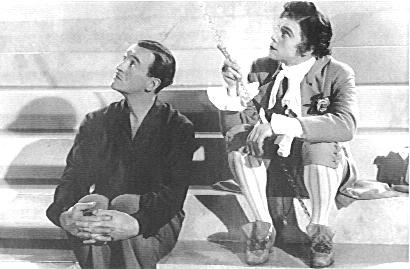
|

|
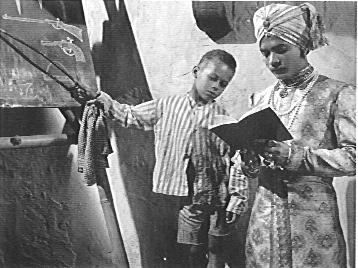
|
|
A Matter of Life and Death
|
Crown Vs. Stevens
|
Black Narcissus
|
For the best part of 30 years, from the '50s to the early '80s, Michael
Powell and Emeric Pressburger were British cinema's guilty secret. Most
of their films were impossible to see in anything like their original form,
or at all, and their reputations were tarnished by the memory of the later,
more conventional films. Even Powell's Peeping Tom, which had the potential
to reinvent him for a new generation, like Hitchcock's Psycho, was slow
to build its cult reputation. And yet it was Peeping Tom that led some
(including me) to seek out their joint films of the '40s and discover how
bold and bizarre British cinema could be.
We now know from Mass Observation reports that their wartime films had more
popular support than might be guessed from most histories of British cinema.
But what stuck was the puzzlement of critics - a condescending 'yes, but
...' - which soon became outright hostility from the young post-war critics
and future filmmakers towards the flamboyant Technicolor melodrama of Black
Narcissus and The Red Shoes.
Strange, in retrospect, that many who admired the artifice of Hollywood
musicals had such problems with the highly experimental opera-ballet of
The Red Shoes and its successors, The Tales of Hoffmann and Oh, Rosalinda!!
But the passage of time has turned these, as well as the wartime films,
into the new classics of British cinema - preferred in many cases to the
worthy realist films that were long venerated as our 'true' national cinema.
Powell and Pressburger prided themselves on thinking ahead, and also keeping
abreast of ideas from outside cinema, while at the same time considering
themselves traditionalists. As a result their wartime films reach back into
history and analyse the national temperament and character with a unique
double perspective -that of the sophisticated. cosmopolitan outsider
Pressburger; and that of the equally inquiring, outward - looking native
Powell. Research on individual films has often shown that the most 'English'
aspects came from Pressburger and the most 'foreign' from Powell;
but whatever the alchemy that enabled them to function as cinema's most
successful writer-producer-director partnership, there can be little doubt
that their best work was done together.
But even if there is now a growing appreciation of just how complex and
multifaceted the main films of The Archers' partnership are, with many studies
linking them to the main currents of twentieth century English and European
culture, including expressionism, surrealism and neo-romanticism, there
are still many aspects of these two careers that remain little known. One
such is the 'prehistory' of Powell as a young director making his way in
the boom years of British production that resulted from the quotas of the
l929 Films Act.
Powell used to joke that his new reputation couldn't stand many more
re-discoveries from this period, but as such discoveries have appeared
over the last decade - and this will be a first opportunity to see them
all together - we can trace the growth of . Powell's technique and the
first appearance of many motifs that will reappear in Archers' films.
'Quota quickie' has long been the dismissive term used for films of
this period, but try seeing them as Britain's B-picture laboratory -
and as the apprenticeship of a master, now fascinatingly made visible.
Ian Christie
A Matter of Life and Death by Ian Christie is published in the BFI Film
Classics series to coincide with this season.
See page 51 for details of book offer.
April 2000 - no sign of it yet :)
November 2000 - at last
it's published
A Matter of Life and Death
New Print
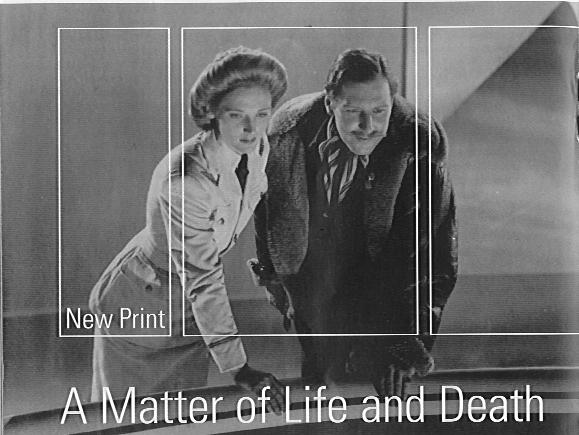
A blazing bomber about to crash days before the end of World War Two, with
a captain who's also a poet sharing his last thoughts with a bewildered
American WAC operator. Soon he'll discover if they still issue wings, or
if the hereafter's gone all modern. There were other poet-pilots and ghostly
flyers in cinema around this time - indeed the war had brought on a rash
of supernaturalism - but A Matter of Life and Death rejected sentimentality
in favour of wit, spectacle and a remarkably clear-sighted view of the
dilemmas facing post-war Britain. Just as Blimp had looked back at the
legacy of empire, AMOLAD (as its makers affectionately called it) looks
forward to Britain having to forge a new relationship with America and
with its ex-colonies. What had started as a propaganda exercise became
one of the key '40s artworks to take stock of Britain's new place in
the world. But its method is neither documentary nor social realism: it's
painting with Technicolor, and dazzling matte and model work - now more
glorious than ever after restoration - and a quartet of unsurpassed
performances by David Niven and Kim Hunter as the star-crossed lovers,
and by Archers' stalwarts Roger Livesey and Raymond Massey, held together
by the mercurial charm of the late Marius Goring (not to mention Kathleen
Byron as an Angel to die for ...).

|

|

|
|
Rynox
|
The Fire Raisers
|
The Night of the Party
|

|
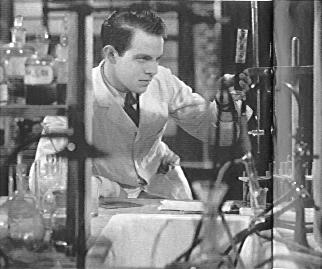
|

|

|
|
Her Last Affaire
|
The Love Test
|
A Canterbury Tale
|
I Know Where I'm Going!
|

|

|

|
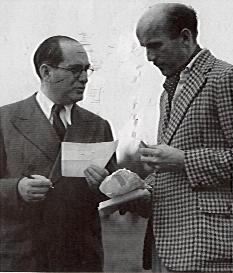
|
|
The Red Shoes
|
Oh... Rosalinda!
|
Black Narcissus
|
Micky and Emeric
|
Education
Focus On... Michael Powell
| Mon | 6 | 2:30 | NFT2 | Rynox (1932)
+ His Lordship (1932)
|
| Mon | 13 | 2:30 | NFT2 | Hotel Splendide (1932)
+ The Fire Raisers (1934)
|
| Mon | 20 | 2:30pm | NFT2 | Phantom Light (1935)
+ Crown Vs. Stevens (1936)
|
Unlike those of near-contempories such as David Lean and Alfred Hitchcock,
Michael Powell's earliest films are rarely seen and were long thought lost.
The films that comprise this month's 'Focus On' show him attacking with
relish a disparate variety of subjects and genres, from pirates on the
Cornish
[or was it Welsh?]
coast to murder mysteries, from doomed love affairs to comic jibes at the
aristocracy. In many ways these films provide valuable insights into his
later work, and are recognisably the work of the man who would more
famously give us
I Know Where I'm Going!,
Black Narcissus and
A Canterbury Tale.
Each screening will have a brief introduction and will be followed
by a discussion.
Sergio Angelini, National Film and Television Archive
Kathleen Byron
Close-up

For many, there remains a magical, defining moment in British cinema; the
scene in Black Narcissus when Sister Ruth abandons her wimple and habit
for a low-cut dress and very slowly and deliberately applies blood-red
lipstick.
It was Kathleen Byron who provided that moment; as Sister Ruth she delivers
an astounding study of repressed sexuality suddenly, fervently and fatally
imploding.
It remains her favourite - and best - film, along with The Small Back Room.
Both of these, like A Matter of Life and Death, were made with Michael Powell,
with whom she entered into the most fruitful phase of her career. She was
frustrated by the 'mad, bad and dangerous to know' roles she was offered
post-Black Narcissus and post-Powell; however, Prelude to Fame was one of
the best. Rejecting a long-term contract in Hollywood, she based herself
in England for a career that now spans several West End plays, numerous
television productions and over 40 films.
Our tribute focuses on that remarkably fertile period of '40s British cinema
and complements our Powell and Pressburger season. We are delighted that,
following a screening of Black Narcissus, Kathleen Byron will appear on
the NFT stage to discuss the film and her career.
Hilary Smith

The Small Back Room
See the Full program of films shown
[Kathleen (on left below) was interviewed on stage by Ian Christie.
Then there was a Question and Answer Session.
Natacha & I also got to meet her afterwards !!
We chatted & she signed my AMOLAD book]
